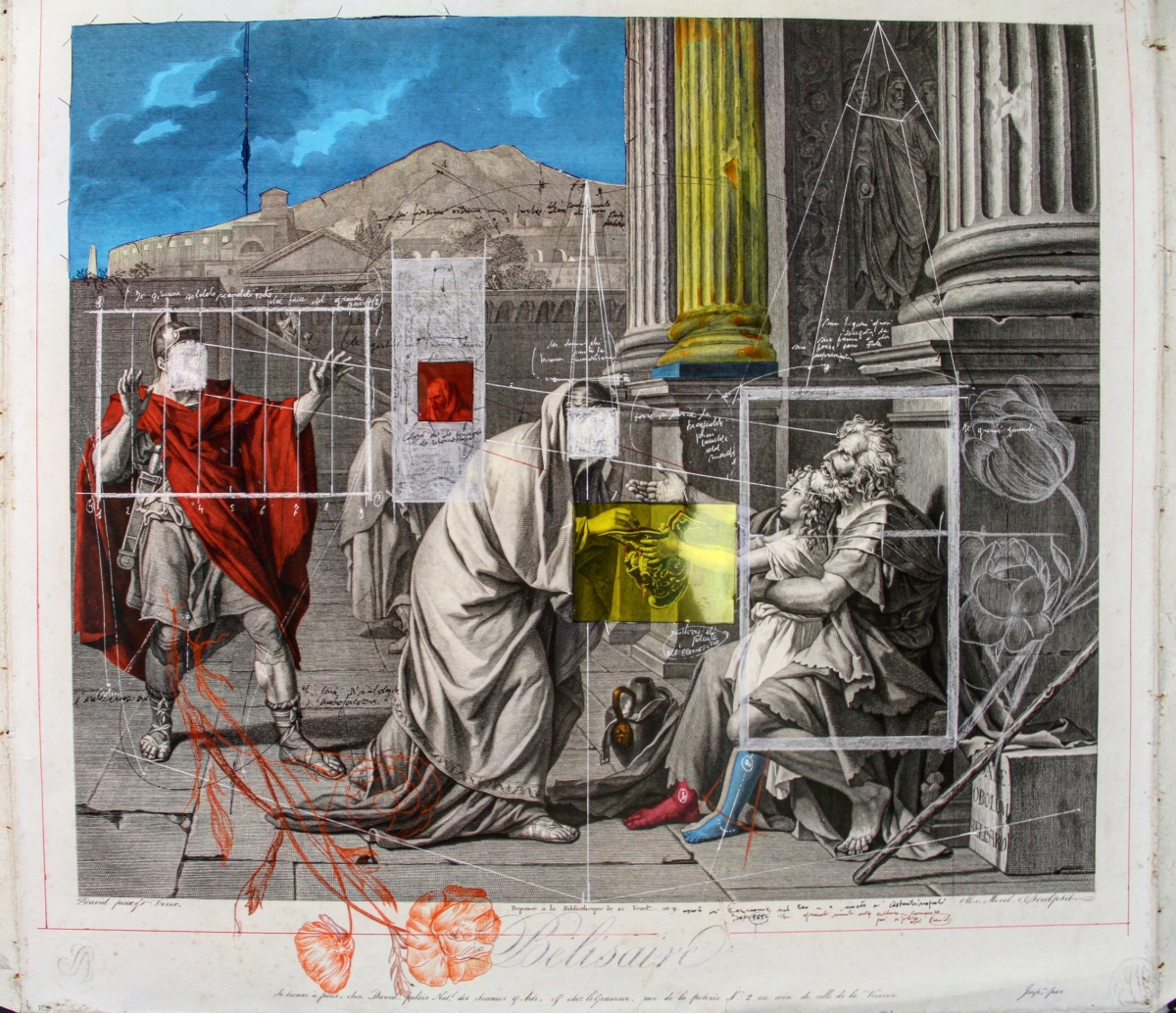
Fabrizio Cotognini mentioned the occult when he recently told me about the work presented at the Teatro Anatomico, Bologna.
In that piece the pictures of a book have a conversation with two little marble sculptures: one covered in copper and gold, and the other covered in silver oxidised by liver of sulphur: between them lie pages describing the migration flows of the birds.
The materials recall the processing of the alchemy, and the pictures tell about inevitable relocations in search of warm spaces and places where one can easily live. Yet, in this work the human and the animal worlds are part of the same pattern, and they create an account that globally deals with life and its dynamics, joining together apparently deeply different levels –the human one and the one of the birds- but similar in so many ways. I am not focusing here on the connections between the two spheres; however, I am trying to understand the similarities between the artistic processes reflected in the intervention of Cotognini on the pages of a book and in covering the marble statues of the two newlyweds.
Finally, I am trying to understand the role of the occult in the research of the artist.
The drawing, the word, the painting.
Two of the artist’s different interests involve him daily: searching and collecting books, and drawing.
On the latter aspect I believe I can say that his intervention modalities - through shapes, strokes, writings and monochromatic paint spots – clearly show how he sees and watches the world, not just as an artist but also as a human being living a certain period in history. His way of telling is never completely accessible (the signs that become words are not always readable), and it carefully analyses every inch of the vision without revealing all the perspectives. Cotognini’s pieces are similar to maps in which the different scenes are divided and framed into sections and areas, in which the lines bring the gaze through decorations and dynamics of the surfaces, and in which thick brush strokes cover characters and places, hiding precise portions of the visual narration. Der reine Tor, a XII century etching (recently published on the cover of La Lettura, by Corriere della Sera), is an example of this care and treatment of the images: the architecture shown in the ancient piece is reinterpreted first of all in defining all of its perspectives; having identified every solution and every possible movement in the space, the artist permits the characters of his imagined world to rise. Some parts have been hidden, some others found their way through the paste of the painting: the starting point – in this case the etching – is a world that Cotognini fully experiences, looking for its mysteries, concealing some parts and adding new characters.
The eye can only get lost following these lines and finding its place where the hand of the artist removes details or opens a conversation between past and present: this combination of painting and writing creates essential moments which become the starting point for the interpretation and the vision of the observer, whose imagination completes what cannot be seen or understood.
In this regard, one piece more than any other deserves to be told: I had the change to expose it in Venice, Serra dei Giardini 2015, namely Simulation of Thoughts. It is a work made of 24 elements, the pages of Manipolazione di Cultura, a project curated by Fabio Mauri between 1971 and 1973, and published by La Nuova Foglio Editrice in 1976. The work shows a similar structure in all of its units: an archive picture from Fascism and Nazism set over a black area with a caption that ironically and cynically comments the manipulative and control habits of the regimes. Power and mass action were, in the artist’s opinion, precious examples of aesthetics carefully used to transmit especially vivid messages, to communicate morals and to assist simulation in the masses. The words, efficient in their being sarcastic and sharp, never had an explicit subject: in this way the investigation was able to recover past models in order to create examples in the present. Manipolazione di Cultura was for Mauri one of the chapters of a study on the connection between images, politics and sense of history: Cotognini fully recognizes some parts of this vision in his works, and he acts in this structure deleting part of the words, concealing black with white, covering portion of images, and reducing and intensifying the scenes. In this way, maybe, the reasonable critique can be followed by the birth of a wish and a future imagined reality, which could bring a real change.
The occultation and the occult
As stated at the beginning, covering the marble faces of a man and a woman gets the meaning of deleting images, writing words and understanding the trajectory of an animal that search for its ideal environment. It is the mechanism that activates the mind and its potential abilities of reading, understanding, re-elaboration, fantasy and imagination: as in drawing so in sculpture, according to Cotognini, the occultation allows humans to see, through the activation of senses, what is not always clear.
Cotognini demonstrates a Steinerian occult – and occultation -, born as a way of hiding in order to reveal, or as a mean of knowledge that has nothing to do with the esoterism, but with the awareness that some elements are not to be found on the surface; it takes a deeper immersion in order to focus them.
Therefore, in this perspective, revealing the reaction that happens between the members of a pair is the same, in Should be higher, as measuring a movement – learning at last that the reason of many dynamics is simply and sincerely natural: the migrations, over any political interpretation, are transfers needed to survive, same as people getting closer. Same as searching, moving, seeing and imagining.